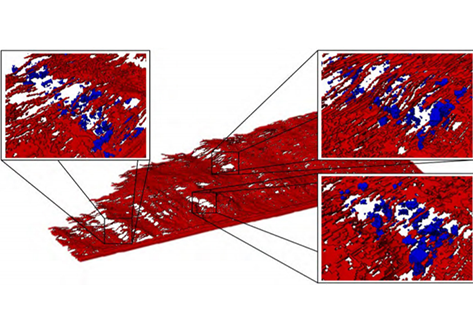Understanding the near-threshold crack growth behavior in an aluminum alloy by x-ray tomography

The near-threshold behavior of long cracks is evaluated using pre-cracked flat dogbone specimens of a commercial aluminum alloy in two heat treatment states. Once the threshold was known, the crack initially introduced by cyclic compression was propagated under load control with approximately
constant range of the stress intensity factor at values close to the threshold values. The 3D morphology of the crack and the spatial distribution of the primary precipitates obtained by µ-CT were reconstructed with the aim of analyzing the role of the microstructure and primary precipitates on crack growth. Results pointed out that there were two major mechanism keeping the crack from continuous extension. First, the crack front was pinned by primary precipitates leading to kinking of the crack front. The second mechanism was pronounced shear-controlled crack growth of long cracks seen in terms of hilly structures on the crack faces. The first mechanism was found to be dominant at R=-1, whereas tests performed with R=0.1 showed
an increased propensity towards shear controlled crack growth.